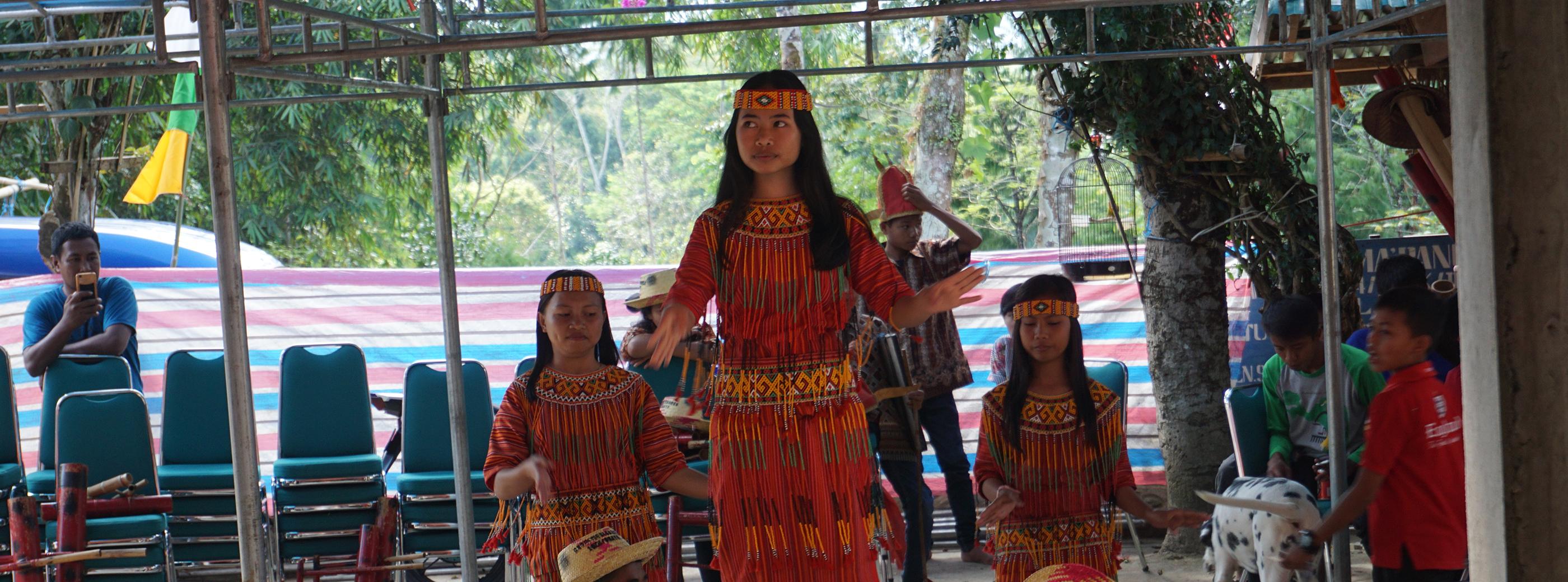SOUTH SULAWESI Tana Toraja Culture
Culture, Ceremonies and Tourist Destinations in South Sulawesi
TORAJAN TRADITIONAL MARKET
Bolu Market is where most money in Toraja rotates. Once every six days, small herders brought in with their trucks buffaloes, ranging from ordinary ones to the exquisite Tedong Bongas – or albino buffaloes - worth billions of Rupiah. Buyers, wandering around in their sarongs, bring huge chunks of cash to the market to make a purchase. A prospective buyer will carefully study every buffalo in detail. Any slight defect in the eyes, jaw or body can reduce the price significantly. While the buyer studies the buffalo for defects the seller will sing its praises. Any positive trait, like a spot of white in the right place or the shape of the horns, is a reason to demand a high price. If both parties are interested then the discussions will begin. Each party looks to get the best deal, haggling over the price, refusing and finally relenting. It is a tradition that dates back decades.
BUFFALOES
Buffaloes play an important role in the myths and legends surrounding Toraja. They form an important part of the local culture. When a loved one departs into the afterlife, it is a tradition that a buffalo is sacrificed. The number of animals to be sacrificed can range from a single bull to a whole herd. The horns of the bulls that are sacrificed adorn the Tongkonan building where family members are laid to rest. It is a final tribute to the departed. “Tedong Saleko or Tedong Bonga” – or albino buffaloes are the ultimate sacrifices. These white-speckled buffaloes are the prized livestock of Torajans. A single bull can cost hundreds of million Rupiah. If you visit the Torajan Market, you will probably see them.
FUNERAL CEREMONY
The funeral ceremonies of Tana Toraja are among the most elaborate in the world. There is a season for the ceremonies, so the funerals are held weeks, months, or sometimes years after death. The body will be kept in the family home until funds are raised to hold an appropriate ceremony. Torajan funeral ceremonies are held during the dry season, from June to September).
FEEL FREE TO CONTACT US FOR MORE INFORMATION
TRADITIONAL DANCE & BAMBOO MUSIC
Pa’gellu - The form of joy and gratitude of Torajanese
Derived from the merriment in celebration of victory in war on ancestral past, this Pa’gellu dance became the embodiment of the overflowing joy in Toraja. “Gellu ‘” means dance in Toraja language, and the word Pa’gellu or Ma’gellu means dancing or doing a dance. Pa’gellu represents the philosophy of social life of Torajanese. They captured their view of the environment around them, from nature, tradition, culture, and faith, which poured in this dance. Therefore, Pa’gellu dance is a form of gratitude to the Creator of all life and nature in Toraja.
GASTRONOMY
Pa’Piong
Pa’piong is one of the highlights of Torajan cuisine. To prepare the food the meat (pork, chicken, fish, or buffalo) is mixed with spices and other ingredients such as grated coconut, scallions, lemon grass, pepper, garlic, and leaves of Miana.
All the ingredients are then wrapped in Miana leaves and inserted into a piece of bamboo, which is sealed shut. The bamboo rod is then cooked barbecue style on an open fire for an hour and a half until the surface of the bamboo blackens or charred. A bamboo rod up to 10cm in length is enough for 8 – 10 packs of Pa’piong.
Pantollo Pammarasan
The famous Pantollo Pamarrasan is one of the culinary delights of Torajan. Pantollo Pamarrasan is a stew. The main part of the dish is the meat. It can be made with buffalo, pork, chicken, freshwater fish or eel. Though Pantollo Pamarrasan is originally made with pork you can find modern variations of the dish. For example some chefs use shrimp or jerked meat.
Pantollo Pamarrasan is cooked in a special combination of herbs and spices that gives the dish a distinct black color. Visitors to Toraja who are familiar with Indonesian food often compare Pantollo Pamarrasan with Rawon beef stew. Both dishes are indeed similar, though the sauce used for Pantollo Pamarrasan is a lot thicker than Rawon.
Kluwak, a native plant/tree of Southeast Asia, is the one of the main ingredients of the soup. It is this ingredient that gives Pantollo Pamarrasan its distinct black colour. The other ingredients used in the dish are shallots, chilies, ginger, galangal, and a pinch of salt.
This tasty Pantollo Pamarrasan is sprinkled with chives and usually served with steamed rice or sago and vegetables. This is a dish that is not to be missed when you visit Tana Toraja.
The Palm Wine / Ballo’
Ballo’ is a local beverage known as palm wine, which is usually served in a bamboo tube. The wine is produced from tapping palm trees (Nira in the local language). The sap is extracted and collected from the cut flower of the palm tree. It is collected in a container is fastened to the trunk. The white liquid that initially collects tends to be very sweet and non-alcoholic before it is fermented.
Ballo’ is usually served at ceremonial events (Rambu Tuka’ & Rambu Solo’) where all the family members are gathered. It is believed this typical drink will keep the heat of the body and give the person who drinks it energy, thereby prolonging their life.
Although this traditional drink is natural and contains a small amount of alcohol, the strength will change depending on how it is prepared.
